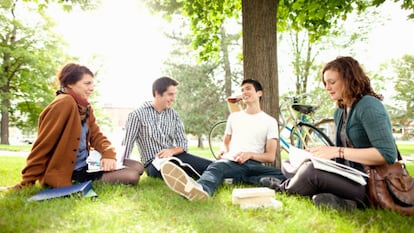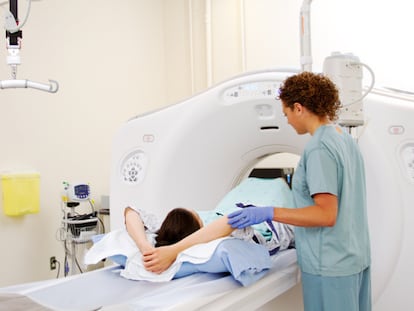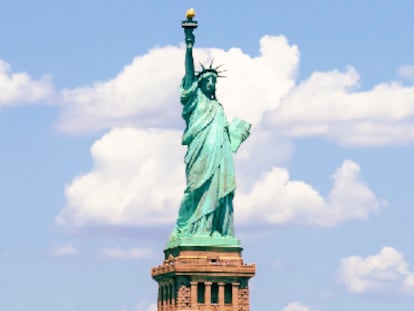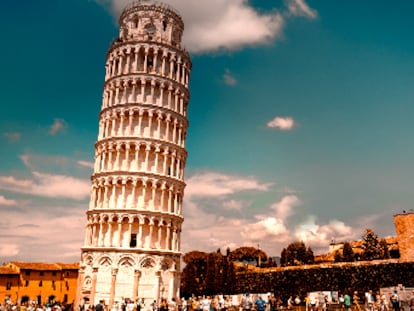Cable sobre el estudio demogr¨¢fico y sociol¨®gico de los musulmanes en Reino Unido
"La poblaci¨®n musulmana est¨¢ muy concentrada. Los musulmanes son el 8% de la poblaci¨®n total de Londres pero el 36% en la zona de Tower Hamlets y el 24% en la de Newham".
| ID: | 185853 |
| Date: | 2009-01-06 11:55:00 |
| Origin: | 09LONDON27 |
| Source: | Embassy London |
| Classification: | SECRET |
| Dunno: | 08STATE128186 |
| Destination: | O 061155Z JAN 09 FM AMEMBASSY LONDON TO SECSTATE WASHDC IMMEDIATE 0834 |
S E C R E T LONDON 000027 DEPARTMENT FOR INR/I AND EUR/WE E.O. 12958: DECL: 12/30/2018 TAGS: PINR, KISL, KPLS, UK SUBJECT: UK MUSLIM DEMOGRAPHICS (C-RE8-02527) REF: A. 08 STATE 128186 B. LONDON DAILY REPORT 7-28-08 Classified By: Political Counselor Rick Mills, Jr. for reasons 1.4 (b) and (d) 1. (S/NF) Summary. Per reftel, this cable provides information on the demographics of the Muslim community in the UK. The last official UK census was in 2001 and much of what is provided below is a combination of census figures and subsequent estimates and surveys. Post notes that the information is incomplete and in many cases several years old. This is, however, the most current and accurate information available. Among the findings are that the UK Muslim population has jumped in seven years from 1.6 million to 2 million. At that rate of increase, HMG estimates that the Muslim population of the UK at the next census in 2011 will be over 2.2 million. End Summary. Overall Muslim Population Growing But Rate Slowing --------------------------------------------- ----- 2. (C) The 2001 UK census showed a population of 1.6 million Muslims. In April 2008, the Home Secretary Jacqui Smith announced that HMG estimated the Muslim population at 2 million or 3.3% of the UK population. This represented an increase of 400,000 in seven years. The 1951 census showed a population of Muslims of less than 22,000. Therefore between 1951 and 2001 (50 years) there had been an annualized increase of 31,500 Muslims in the UK, but in the seven year period between 2001 and 2008 there was an actual annualized increase of 57,000. The rate of increase as measured by decades has slowed, however. In 1961, the population of Muslims in the UK was 2.5 times what it had been in 1951. Between 1961 and 1971 the Muslim population multiplied an astonishing 5 times its previous population. Thereafter the Muslim population's rate of growth began to slow. In 1981 it was only 2.4 times the 1971 population (this was attributed to the ending of unlimited Commonwealth immigration in the early 1970's). In 1991 it was only 1.7 times what it had been in 1981; and between 1991 and 2001 it only grew by 1.6 times the previous population. Based on a projected 2011 population of 2.2 million, the rate of increase between 2001 and 2011 is estimated to be 1.4 times the 2001 figure. In overall numbers, the UK Muslim population is rapidly increasing, but its rate of growth is slowly decreasing. Changes to UK visa rules announced in 2008 may slow this rate even more. Immigration Or Birthrate? ------------------------- 3. (C) HMG does not categorize either births or immigration by religion. A rough estimate, however, based on immigration statistics by country of origin indicates 50-55,000 "self declared" Muslims were granted settlement (permanent residence) in the UK in 2007. Based on the aforementioned 57,000 annualized growth in the Muslim population, it is clear that a significant portion of the population growth among Muslims in the UK is based on immigration. 34% of Muslims in 2001 were below the age of 16, however, and 63% of Muslim households had at least one child and 25% contained 3 or more children. Based on these statistics a report by the NGO Migration Watch UK (MWUK), which favors restrictions on immigration, estimated in 2008 that the real number of Muslims in the UK was closer to 3 million which would be 5% of the UK population. Raw Data: Office of National Statistics --------------------------------------- 4. (SBU) The following are excerpts from the UK's Office of National Statistics (ONS), all data is from the 2001 UK census unless otherwise noted. -- The 2001 Census showed that out of the total UK population of 58.8 million, 1.6 million identify as Muslims. At 3 percent, this is the largest non-Christian religious population. They are a young, tightly clustered, but often disadvantaged community, according to UK social and economic statistics. -- People with Muslim backgrounds are most concentrated in London (38% of the total UK Muslim population) and other large urban areas, including the West Midlands (14% of the Muslim population), the North West (13%), and Yorkshire and the Humber (12%). Within these areas, Muslims are highly concentrated spatially. Muslims make up 8% of the population of London overall, but 36% of the Tower Hamlets area and 24% of the Newham area population. -- 70% of Muslims gave their national identity as British, English, Scottish, or Welsh; 91% of UK-born Muslims gave a British national identity. -- More than half of Muslim adults living in England and Wales in 2001 said their religion was important to their self-identity. -- Muslims are the second least-likely of all religious groups to have been born in the UK, with the majority being born outside the UK; 46% were born in the UK, 39% were born in Asia (Pakistan - 18%; Bangladesh - 9%; India - 3%), 9% were born in Africa (Somalia - 2%; Kenya - 1%), and 4% were born in Europe outside the UK (Turkey - 3%, former Yugoslavian countries - 1%). -- Muslims were more likely than all other groups of UK 16 to 24-year-olds to be living with a partner, either as a married or cohabiting couple (19% each). -- Among 45 to 54-year-olds, 17% described their marital status as divorced, separated or re-married. -- Muslims households were the least likely to be homeowners (52%) and are the most likely among all religious groups to be living in accommodation rented from the council or housing association (28%); 4% live rent-free. -- 32% of Muslim households live in overcrowded accommodation. Average family size for a Muslim family is 3.8, which can contribute to overcrowding. 34% of Muslim households contained more than five people. 63% contained at least one dependent child, and 25% contained three or more dependent children. -- Unemployment rates were higher for Muslims than any other religion, for both men and women. Muslim male unemployment rate was 13% in 2004, and for women it was 18%. -- Muslims between the ages of 16 and 24 had the highest unemployment rates at 28%; 11% of Muslims over the age of 25 were unemployed. -- Muslims were most likely to be unavailable or not actively seeking work due to reasons such as disability, being a student, or looking after the family and home. 31% of working-age men were economically inactive, as were 69% of working-age women. -- With 34% of Muslims under the age of 16 in 2001, Muslims have the youngest age profile of all the religious groups in Great Britain. Less than one in ten were aged 65 or older. -- Muslim men outnumber women 52% to 48%. -- 74% of Muslims are from an Asian ethnic background (Pakistani - 43%, Bangladeshi - 16%, Indian - 8%, Other Asian - 6%), Almost 1.2 million Asian Muslims were living in Great Britain in 2001. Another 11% were from a White ethnic background, including 4% of White British origin and 7% from another White background (including Turkish, Cypriot, Arab and Eastern European). 6% of Muslims were of Black African origin, mainly from North and West Africa. -- Muslims, both male and female, had the highest rates of reported ill health in 2000. Age-standardized rates of "not good" health were 13% for Muslim males and 16% for Muslim females. -- Muslims had the highest rates of disability, with 24% of females and 21% of males claiming a disability. -- Lone parent households are less common within Muslim communities, with around 50% of Muslim households headed by an individual who is part of a married couple. -- Muslim households were also more likely to contain more than one family, with 19% of all multiple family households Muslim. -- 33% of working-age Muslims in Great Britain had no qualifications in 2004, which is the highest rate of any religious group. At 12%, they were also the least likely to have degrees or equivalent qualifications. -- Muslims who were born in the UK are more likely than Muslims born elsewhere to have a degree or equivalent qualification at any age. UK-born Muslims under the age of 30 were almost twice as likely to have degrees as those born elsewhere in 2004. -- 371,000 school-aged (5 to 16 years old) Muslim children were in England in 2001, and by 2008 there were seven state-maintained Islamic schools catering to around 2,100 Muslim children. -- One-fifth of Muslims were self-employed n 2004. -- 37% of Muslim men and over a quarter of Muslim women were working in the distribution, hotel and restaurant industry. -- One in seven Muslim men work in the transport and communication industry. -- Less than a third of Muslim men work in managerial or professional occupations, and almost one in ten worked as a taxi driver, cab driver or chauffeur in 2004. -- Between 16 and 20% of Muslim women work in sales and customer service jobs. Raw Data: Post's 2008 Religious Freedom Report and NGOs --------------------------------------------- ---------- 5. (SBU) The following are excerpted from Post's International Religious Freedom Report (IRFR) and reports or studies from various Muslim and migration/immigration NGO's. Citations are from the IRFR unless otherwise noted. -- The Government estimates the number of mosques in the UK to be around 1,000. -- A May 8, 2008, Religious Trends report states that more than 50% of Muslims regularly worship at mosques. (Embassy Comment: Religious Trends is a UK think tank that monitors a wide array of religious issues. Among other things, the 2008 report noted that while 43 million UK residents claimed to be Christians, less than 3 million (7%) regularly worship in churches. End Comment). -- The Crown Prosecution Service (CPS) reported a decrease in prosecutions over the previous reporting period for religiously-motivated incidents, with only 29 cases classified as religiously-aggravated offenses. Of the 23 cases in which the victim's religious affiliation is known, 17 were Muslim. -- In 2006, controversy arose after 100 Islamic private schools turned out to be "little more than places where the Koran is recited," the schools promised to upgrade their instruction and they are due for review in 2010. -- According to a poll of 600 Muslim and 800 non-Muslim students at thirty universities throughout the UK conducted by the Centre for Social Cohesion (CSC), as reported ref B, 32 percent of Muslims on UK campuses believe killing in the name of religion is justified, 54 percent wanted a Muslim Party to represent their world view in Parliament, and 40 percent want Muslims in the UK to be under Sharia law. Only 2 percent of non-Muslims felt killing in the name of religion could be justified and none believed it was acceptable for Muslims in the UK to have a religious-based party, or to be under Sharia law. 73 percent of Muslim students are at least occasional participants in Friday services while only 2 percent of non-Muslim students attend any religious service. The poll results also found that 73 percent of Muslim students believe it is possible to be both Muslim and British and a similar number believe their parents are "much more or somewhat more" strict Muslims than they are. In addition only six percent believed that people who leave Islam for another religion should be "punished according to Sharia law" (killed). -- According to MWUK, arranged marriages in the Muslim community are creating unusually large population growth in areas where Muslims predominate, since first-generation families tend to have larger numbers of children (based on published research and a comparison of the 1991 and 2001 census). For example, in the eighties the Bradford (city) Council estimated that the Muslim population would reach 130,000 by 2030 and then level off. Now the projection is for 130,000 by 2020 and rising. Bradford is a West Yorkshire industrial city whose 2001 population of 294,000 included an estimated 75,000 Muslims (25%), predominantly of Pakistani origin. Bradford has the largest Muslim population in the UK outside of London, and no single London borough (neighborhood) has as large a Muslim population. -- Also according to MWUK, the number of marriageble-age Muslims in the South Asian community had jumped from 155,000 in 1991 to 236,000 in 2001. MWUK claims the majority of members of these communities seek spouses from overseas in arranged marriages. MWUK claims these figures point to a much larger Muslim population than HMG is reporting and is projecting. HMG says arranged marriages with South Asian partners, "are a normal facet of settlement figures." Visit London's Classified Website: http://www.intelink.sgov.gov/wiki/Portal:Unit ed_Kingdom TUTTLE |
Traducci¨®n autom¨¢tica. Puede que el texto traducido no sea fiel al original
Tu suscripci¨®n se est¨¢ usando en otro dispositivo
?Quieres a?adir otro usuario a tu suscripci¨®n?
Si contin¨²as leyendo en este dispositivo, no se podr¨¢ leer en el otro.
FlechaTu suscripci¨®n se est¨¢ usando en otro dispositivo y solo puedes acceder a EL PA?S desde un dispositivo a la vez.
Si quieres compartir tu cuenta, cambia tu suscripci¨®n a la modalidad Premium, as¨ª podr¨¢s a?adir otro usuario. Cada uno acceder¨¢ con su propia cuenta de email, lo que os permitir¨¢ personalizar vuestra experiencia en EL PA?S.
En el caso de no saber qui¨¦n est¨¢ usando tu cuenta, te recomendamos cambiar tu contrase?a aqu¨ª.
Si decides continuar compartiendo tu cuenta, este mensaje se mostrar¨¢ en tu dispositivo y en el de la otra persona que est¨¢ usando tu cuenta de forma indefinida, afectando a tu experiencia de lectura. Puedes consultar aqu¨ª los t¨¦rminos y condiciones de la suscripci¨®n digital.
































































